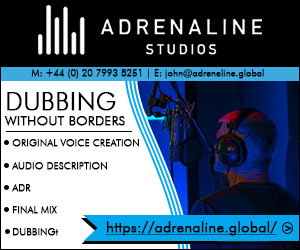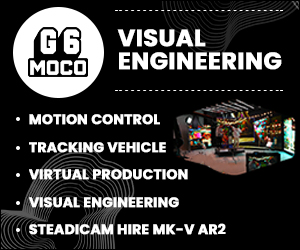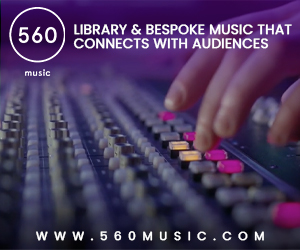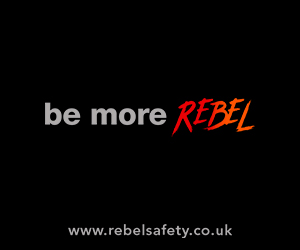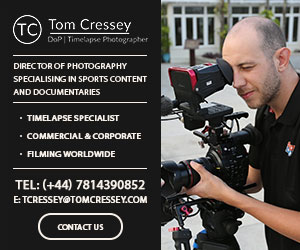Broadcast News
06/11/2014
Big Interview - Jünger Audio Solutions For The Modern Age
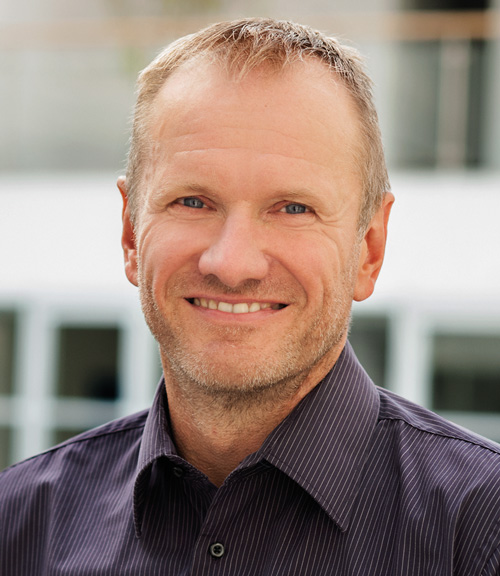
Established in Berlin in 1990, Jünger Audio might be a relatively young company, but has over the years built a reputation for delivering quality audio products to radio and TV broadcasters, IPTV providers, music recording studios and post-production facilities. BFV spoke to Managing Director Peter Pörs about the new DPP standard and the company's latest offerings...
BFV: October saw the introduction in the UK of the DPP's single, file-based delivery standard for broadcasters, which obviously includes loudness standardisation. What is Jünger's position on this move? Is loudness standardisation important for the industry?
PP: In general, loudness standardisation makes a lot of sense. If the correct references are given and if the rules are clear, it will give end users the benefit of enjoying well aligned and consistent loudness while watching TV.
Typically it will also create new opportunities to improve audio quality, as going by loudness should reduce peak oriented signal compression to keep the audio content close to a technical delivery specification. It is still a fact that not every kind of loudness normalisation can deliver good results.
But as well as this, after the introduction of the new standard, there will be situations in which the wrong file is sent to transmission.
The demands on quality control will be higher and in our experience a need for online control of output streams is a given. But it can be done in a way that critical content will be improved while compliant material remains virtually untouched.
How do Jünger products help broadcasters contain and solve loudness problems, for example the jumps in volume that are arguably one of the biggest complaints made by today's TV viewers?
Dealing with audio transitions can be difficult. The box cannot know if a change in loudness is what the producer has created to express dramatic moments, or if it is just bad transition while changing programs. If we set a loudness control to reduce all those 'jumps', it will do it regardless of whether this was initially intended or not. In these cases, we usually refer to the concept of 'managed loudness control'.
If the playout system tells our unit that this is a moment of transition, we can deal with these kind of jumps as if they are part of the dramatic content. This is the intelligent way of improving the situation. It isn't too complicated to manage loudness control in an effective way, but in many places this kind of solution simply hasn’t been considered.
At IBC in September the company announced the release of the D*AP8 Codec Edition. What does the update provide and how does it fill the gap left by the discontinuation of Dolby's DP570 Multichannel Audio Tool?
The Codec Edition is basically a chassis that can carry audio compression, as well as audio interfacing. This way users can arrange legacy decoding or encoding and metadata creation and verification in a flexible and cost effective way.
The D*AP8 CODEC Edition could replace the DP570 in some respects, but more especially it is aimed at replacing other encoder/decoder products. That being said, the D*AP8 MAP EDITION does act as a powerful replacement for the 570, boasting a lot of additional powerful features.
And did I hear mention at the show that Jünger is planning a plug-in release at some stage over the next year?
The first plug-in release is planned for early next year. It will be our well known Level Magic™ algorithm. Professional clients are asking to perform files in exactly the same way, as they like the real-time, stream-based processing that we are offering with our variety of hardware products.
One of last year's big stories for the company was the incorporation of Audinate's Dante™ IP Technology. IP seems to be a big talking point currently in the industry. Can you explain why? What are the advantages of audio over IP and how does Jünger seek to capitalise on this trend?
We are in in the process of integrating Dante™ interface to our range of products as well.
First off, I can see this filling a substantial gap for our clients.
Secondly, there might also be some benefits for signal distribution in modern technology. But I don't see any advantage in terms of quality of audio production. It isn't our number one target to capitalise on this aspect.
We would prefer to focus on audio quality and audio performance instead of IT based specs for audio production.
Are there any other upcoming developments we should be keeping an eye out for?
Definitely. There will be new solutions and therefore new products coming in future, which should be good news for TV audio production as well as for radio production. And we are also looking forward to introducing new solutions for object coded surround sound, developed via collaboration with the technology leaders in this field.
The article is available to read in BFV online.
(IT/JP)
BFV: October saw the introduction in the UK of the DPP's single, file-based delivery standard for broadcasters, which obviously includes loudness standardisation. What is Jünger's position on this move? Is loudness standardisation important for the industry?
PP: In general, loudness standardisation makes a lot of sense. If the correct references are given and if the rules are clear, it will give end users the benefit of enjoying well aligned and consistent loudness while watching TV.
Typically it will also create new opportunities to improve audio quality, as going by loudness should reduce peak oriented signal compression to keep the audio content close to a technical delivery specification. It is still a fact that not every kind of loudness normalisation can deliver good results.
But as well as this, after the introduction of the new standard, there will be situations in which the wrong file is sent to transmission.
The demands on quality control will be higher and in our experience a need for online control of output streams is a given. But it can be done in a way that critical content will be improved while compliant material remains virtually untouched.
How do Jünger products help broadcasters contain and solve loudness problems, for example the jumps in volume that are arguably one of the biggest complaints made by today's TV viewers?
Dealing with audio transitions can be difficult. The box cannot know if a change in loudness is what the producer has created to express dramatic moments, or if it is just bad transition while changing programs. If we set a loudness control to reduce all those 'jumps', it will do it regardless of whether this was initially intended or not. In these cases, we usually refer to the concept of 'managed loudness control'.
If the playout system tells our unit that this is a moment of transition, we can deal with these kind of jumps as if they are part of the dramatic content. This is the intelligent way of improving the situation. It isn't too complicated to manage loudness control in an effective way, but in many places this kind of solution simply hasn’t been considered.
At IBC in September the company announced the release of the D*AP8 Codec Edition. What does the update provide and how does it fill the gap left by the discontinuation of Dolby's DP570 Multichannel Audio Tool?
The Codec Edition is basically a chassis that can carry audio compression, as well as audio interfacing. This way users can arrange legacy decoding or encoding and metadata creation and verification in a flexible and cost effective way.
The D*AP8 CODEC Edition could replace the DP570 in some respects, but more especially it is aimed at replacing other encoder/decoder products. That being said, the D*AP8 MAP EDITION does act as a powerful replacement for the 570, boasting a lot of additional powerful features.
And did I hear mention at the show that Jünger is planning a plug-in release at some stage over the next year?
The first plug-in release is planned for early next year. It will be our well known Level Magic™ algorithm. Professional clients are asking to perform files in exactly the same way, as they like the real-time, stream-based processing that we are offering with our variety of hardware products.
One of last year's big stories for the company was the incorporation of Audinate's Dante™ IP Technology. IP seems to be a big talking point currently in the industry. Can you explain why? What are the advantages of audio over IP and how does Jünger seek to capitalise on this trend?
We are in in the process of integrating Dante™ interface to our range of products as well.
First off, I can see this filling a substantial gap for our clients.
Secondly, there might also be some benefits for signal distribution in modern technology. But I don't see any advantage in terms of quality of audio production. It isn't our number one target to capitalise on this aspect.
We would prefer to focus on audio quality and audio performance instead of IT based specs for audio production.
Are there any other upcoming developments we should be keeping an eye out for?
Definitely. There will be new solutions and therefore new products coming in future, which should be good news for TV audio production as well as for radio production. And we are also looking forward to introducing new solutions for object coded surround sound, developed via collaboration with the technology leaders in this field.
The article is available to read in BFV online.
(IT/JP)
Top Related Stories
Click here for the latest broadcast news stories.
11/11/2016
What Is The Future For Immersive Audio?
Peter Poers, Managing Director at Jünger Audio, looks at production efforts versus consumer experience. Introduction Along with the evolution of highe
What Is The Future For Immersive Audio?
Peter Poers, Managing Director at Jünger Audio, looks at production efforts versus consumer experience. Introduction Along with the evolution of highe
19/07/2012
Jünger Audio Makes Audio Loudness Its Focus At BIRTV 2012
Dynamics specialist Jünger Audio will focus on controlling audio loudness in the broadcast chain at this year’s BIRTV convention in China (August 22nd
Jünger Audio Makes Audio Loudness Its Focus At BIRTV 2012
Dynamics specialist Jünger Audio will focus on controlling audio loudness in the broadcast chain at this year’s BIRTV convention in China (August 22nd
14/05/2012
Jünger Audio Makes Audio Loudness Its Focus At Broadcast Asia 2012
Dynamics specialist Jünger Audio will focus on controlling audio loudness in the broadcast chain at this year’s Broadcast Asia convention in Singapore
Jünger Audio Makes Audio Loudness Its Focus At Broadcast Asia 2012
Dynamics specialist Jünger Audio will focus on controlling audio loudness in the broadcast chain at this year’s Broadcast Asia convention in Singapore
03/09/2018
Signum Audio To Unveil New Bute Loudness Normaliser At IBC
Scotland-based developer Signum Audio is to unveil its new Bute Loudness Normaliser at the upcoming IBC 2018 (Stand 9.LP30). Bute Loudness Normaliser
Signum Audio To Unveil New Bute Loudness Normaliser At IBC
Scotland-based developer Signum Audio is to unveil its new Bute Loudness Normaliser at the upcoming IBC 2018 (Stand 9.LP30). Bute Loudness Normaliser
02/05/2018
Signum Audio Releases New Integrated Loudness Solution
Signum Audio has released its brand new integrated loudness solution, the Bute Loudness Suite. The suite comprises of an Analyser, True Peak Brickwall
Signum Audio Releases New Integrated Loudness Solution
Signum Audio has released its brand new integrated loudness solution, the Bute Loudness Suite. The suite comprises of an Analyser, True Peak Brickwall
30/09/2015
NUGEN Audio Releases New DSP VisLM-H2 Loudness Meter
NUGEN Audio has introduced a new DSP option for its VisLM-H2 visual loudness meter, targeted to users of Avid Pro Tools HDX systems. Leveraging advanc
NUGEN Audio Releases New DSP VisLM-H2 Loudness Meter
NUGEN Audio has introduced a new DSP option for its VisLM-H2 visual loudness meter, targeted to users of Avid Pro Tools HDX systems. Leveraging advanc
24/01/2013
NUGEN Audio At BVE 2013
At BVE 2013, NUGEN Audio will showcase its complete line of industry-leading solutions for loudness correction that offer a smarter approach to meetin
NUGEN Audio At BVE 2013
At BVE 2013, NUGEN Audio will showcase its complete line of industry-leading solutions for loudness correction that offer a smarter approach to meetin
28/01/2013
NUGEN Audio At BVE 2013
At BVE 2013, NUGEN Audio will showcase its complete line of industry-leading solutions for loudness correction that offer a smarter approach to meetin
NUGEN Audio At BVE 2013
At BVE 2013, NUGEN Audio will showcase its complete line of industry-leading solutions for loudness correction that offer a smarter approach to meetin
26/03/2014
NUGEN Audio To Unveil Complete Family Of Solutions At NAB 2014
With a special emphasis on the emerging loudness requirements of American broadcasters, NUGEN Audio is presenting its complete family of industry-lead
NUGEN Audio To Unveil Complete Family Of Solutions At NAB 2014
With a special emphasis on the emerging loudness requirements of American broadcasters, NUGEN Audio is presenting its complete family of industry-lead
08/06/2011
Jünger Audio Introduces New High Performance Audio Processing Products At Broadcast Asia 2011
Dynamics processing specialist Jünger Audio will be showing a number of new projects at Broadcast Asia 2011 (Stand: 4U3-01), including the award-winni
Jünger Audio Introduces New High Performance Audio Processing Products At Broadcast Asia 2011
Dynamics processing specialist Jünger Audio will be showing a number of new projects at Broadcast Asia 2011 (Stand: 4U3-01), including the award-winni
03/07/2015
Turning Up The Volume
Picking up from Issue 225, we're once again looking at Broadcast Audio, particularly at loudness metering and mixing consoles – and how the industry i
Turning Up The Volume
Picking up from Issue 225, we're once again looking at Broadcast Audio, particularly at loudness metering and mixing consoles – and how the industry i
04/10/2013
ZEN And The Art Of Loudness Metering
Television loudness has been a viewer’s concern for decades, but recent ITU standardisation has focussed the attention of programme creators on achiev
ZEN And The Art Of Loudness Metering
Television loudness has been a viewer’s concern for decades, but recent ITU standardisation has focussed the attention of programme creators on achiev
05/02/2014
NUGEN Audio Prepares For BVE 2014
NUGEN Audio is to showcase a range of its products, including the new MultiMonitor software for loudness and true-peak monitoring, at this year's BVE
NUGEN Audio Prepares For BVE 2014
NUGEN Audio is to showcase a range of its products, including the new MultiMonitor software for loudness and true-peak monitoring, at this year's BVE
13/09/2022
Calrec Audio Unveils New Audio Mixing System
At IBC 2022 Calrec Audio will unveiled a new audio mixing system designed to keep pace with the changes broadcasters are experiencing in their product
Calrec Audio Unveils New Audio Mixing System
At IBC 2022 Calrec Audio will unveiled a new audio mixing system designed to keep pace with the changes broadcasters are experiencing in their product
03/09/2018
Pro Audio Named New Audio-Technica Distributor In South Africa
Audio-Technica has appointed Pro Audio as its new distributor in South Africa. The Johannesburg-based company will deal with Audio-Technica's consumer
Pro Audio Named New Audio-Technica Distributor In South Africa
Audio-Technica has appointed Pro Audio as its new distributor in South Africa. The Johannesburg-based company will deal with Audio-Technica's consumer





